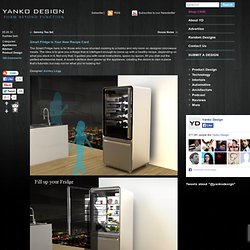

China's '3D Fast Bus' Straddles the Road So Cars Can Drive Under. Photos: Chinanews Too Expensive to Go Under?

Go Over... What if there was a way to get most of the benefits of a subway, but without the costs of digging up all those tunnels? The Chinese company Shenzhen Hashi Future Parking Equipment Co. thinks it might be able to do just that with a concept it calls the 3D Fast Bus (which has also been called the straddling bus), and kind of giant bus/train that straddles the street and allows cars to drive right under it.
This means that it isn't slowed down by traffic and it doesn't add to traffic either. The presenter in this video is Song Youzhou, chairman of Shenzhen Hashi Future Parking Equipment Co., the company that is proposing the 3D Fast Bus. New super technologies expected in the next five years. The Secret to Anti-Gravity REVEALED ! - une vidéo Tech & Science. Kinect (Project Natal) : Milo - Virtual Human XBox 360. The Known Universe by AMNH. 3-D Printing Whole Buildings in Stone...in Space: This Printer Rocks. In Pisa, Italy, mad genius Enrico Dini is building sandcastles on the moon.

201011191019.jpg (JPEG Image, 442x700 pixels) Humans Play God Big-time: Relocate Oceans To Deserts. Transplanting seas to inland ocean lakes?

A good idea for the Middle East? The two century-old and highly respected Japanese engineering giant Shimizu has hatched a wild and crazy proposal to rehabilitate the desert for human use. Their idea is to move vast amounts of seawater along canals that would track deep into desert landmasses to create a series of connected huge inland seas measuring 30 km (18 miles) across.
Small cities could then be created within the gigantic seawater “lakes,” on artificial islands. Each seawater lake with its city would spaced apart along connecting canals measuring 150 km (93 miles) between each seawater lake city. Plug In America. Eric Giler demos wireless electricity. Robotic Exoskeleton turns grunts into Super Soldiers. The Chinese Room Argument. 1.

Overview Work in Artificial Intelligence (AI) has produced computer programs that can beat the world chess champion and defeat the best human players on the television quiz show Jeopardy. AI has also produced programs with which one can converse in natural language, including Apple's Siri. Our experience shows that playing chess or Jeopardy, and carrying on a conversation, are activities that require understanding and intelligence. Does computer prowess at challenging games and conversation then show that computers can understand and be intelligent? Jem Melts Rock Using Sunshine - Bang Goes The Theory - Series 3, Episode 5 Preview - BBC One. Smart Fridge by Ashley Legg. Smart Fridge Is Your New Recipe Card.

Into the abyss: The diving suit that turns men into fish - Science, News. The invention of scuba diving has allowed us to breathe underwater but only at very shallow depths.

Thanks to our inability to conquer the bends, diving below 70m still remains astonishingly dangerous to anyone but a handful of experts. Ultra-deep diving is so lethal that more people have walked on the moon than descended below 240m using scuba gear. Now an inventor in the United States believes he has solved the riddle of how to get humans down to serious depths – by getting us to breathe liquid like fish. Arnold Lande, a retired American heart and lung surgeon, has patented a scuba suit that would allow a human to breathe “liquid air”, a special solution that has been highly enriched with oxygen molecules.
The idea immediately conjures up the terrifying spectre of drowning but our lungs are more than capable of taking oxygen from a solution. The £2.2billion superlab where scientists are creating a star on Earth. By Daily Mail Reporter Updated: 20:10 GMT, 17 November 2010 It may look like any average building but behind closed doors could lie the answer to safe renewable energy of the future.

Here at the National Ignition Facility in Livermore California, scientists are aiming to build the world's first sustainable fusion reactor by 'creating a miniature star on Earth'. Gold Nanoparticles Could Transform Trees Into Street Lights. Street lights are an important part of our urban infrastructure — they light our way home and make the roads safe at night.

But what if we could create natural street lights that don’t need electricity to power them? A group of scientists in Taiwan recently discovered that placing gold nanoparticles within the leaves of trees, causes them to give off a luminous reddish glow. The idea of using trees to replace street lights is an ingenious one – not only would it save on electricity costs and cut CO2 emissions, but it could also greatly reduce light pollution in major cities. Photo © mrhayata. With electronic contact lenses, bionic eyesight could become reality. A new generation of contact lenses built with tiny circuits and LEDs could make bionic eyesight a reality. Researchers at the University of Washington in Seattle have created contact lenses with built-in electronics and an LED, powered wirelessly by RF.
"These lenses don’t give us the vision of an eagle or the benefit of running subtitles on our surroundings yet," University of Washington professor Babak Parviz writes in IEEE Spectrum. Holographic TV dreams in Japan 2022 World Cup bid. Video.